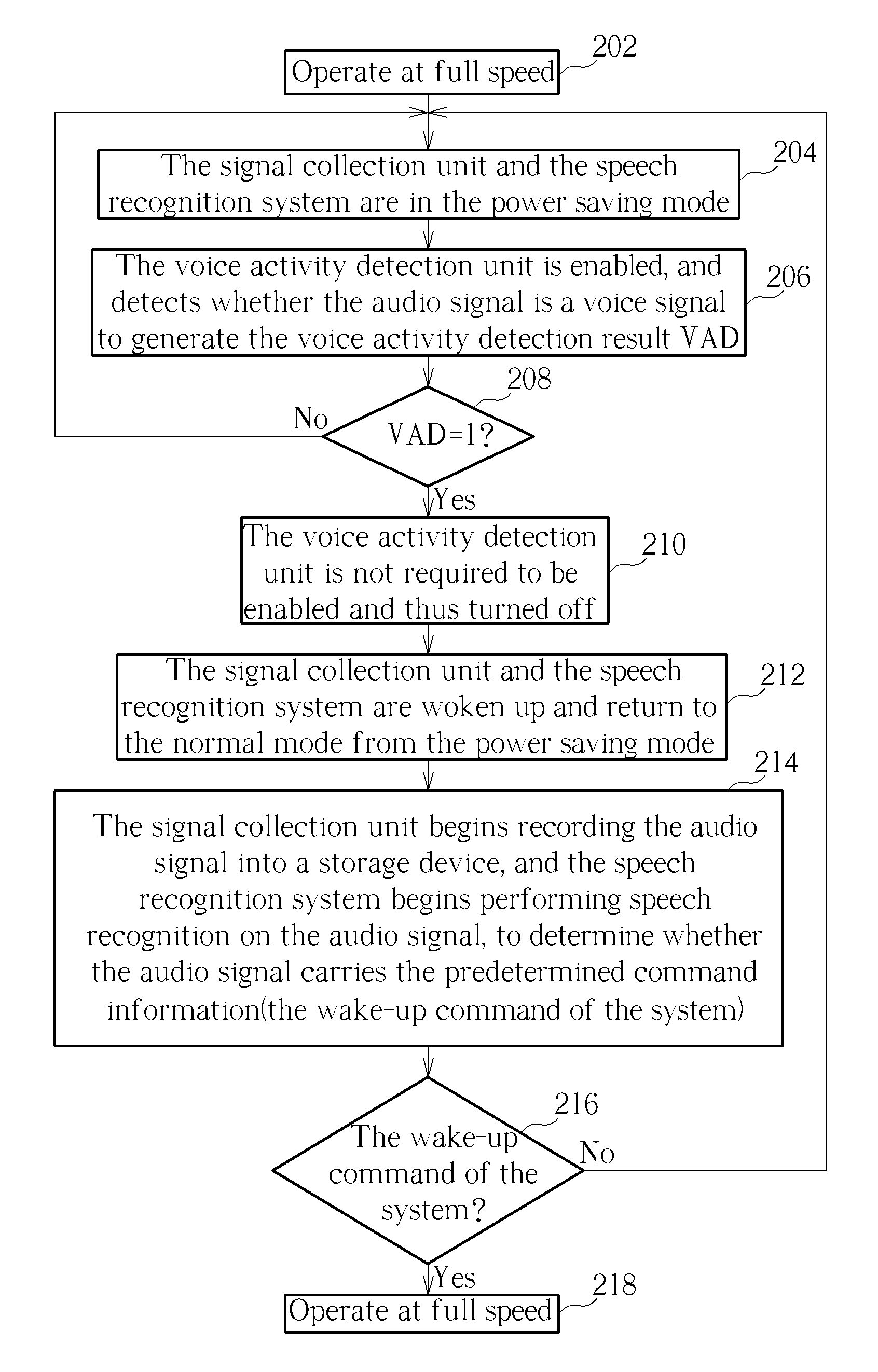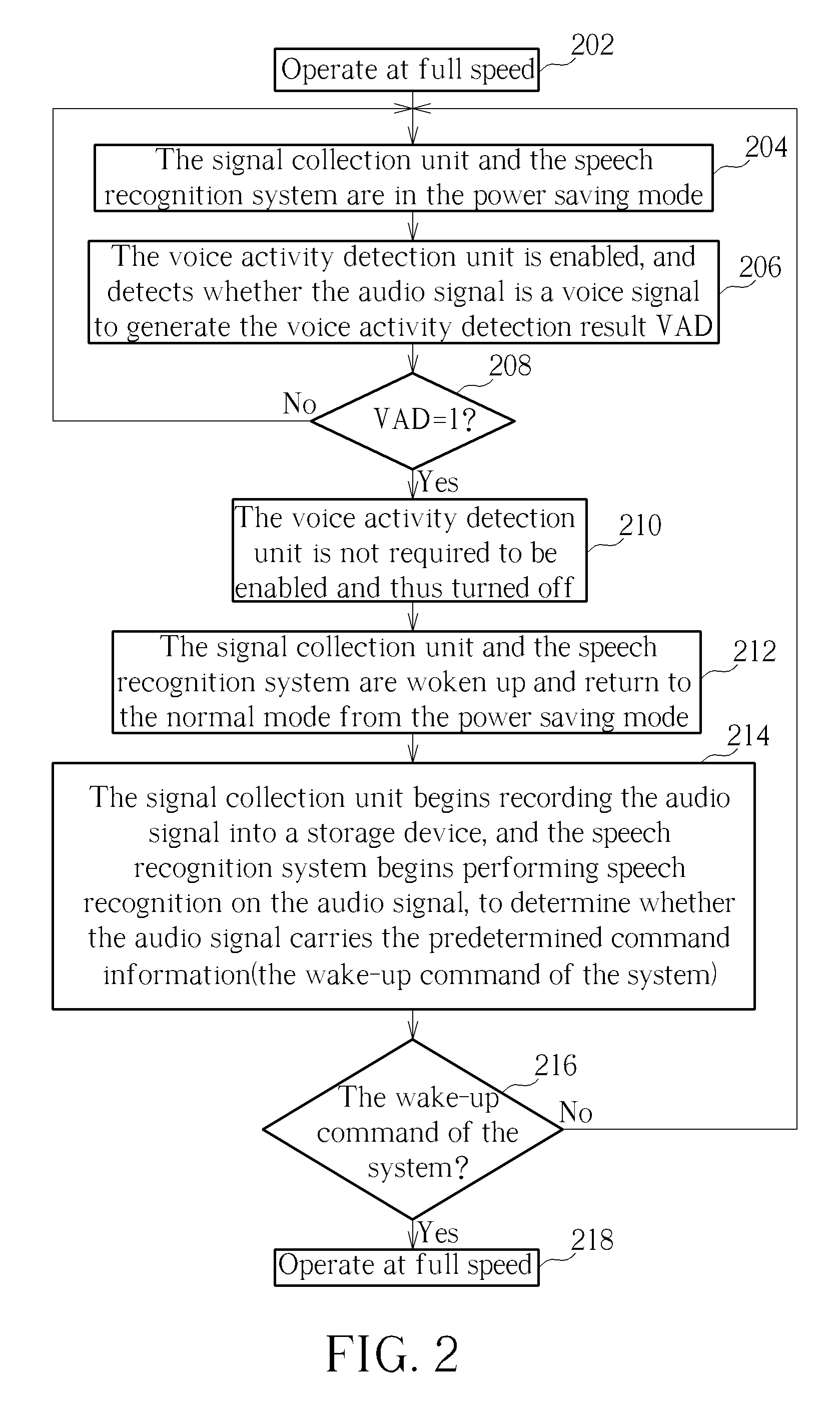Signal processing apparatus having voice activity detection unit and related signal processing methods
a signal processing and voice activity detection technology, applied in the field of signal processing apparatus and method, can solve the problems of not following the power saving trend, wasting power, and recording signals to be recognized that contain too many none-voice durations, so as to avoid unnecessary waste of power of speech recognition system, improve system efficiency, and improve system efficiency
- Summary
- Abstract
- Description
- Claims
- Application Information
AI Technical Summary
Benefits of technology
Problems solved by technology
Method used
Image
Examples
first embodiment
[0051]Please refer to FIG. 4, which is a flowchart of an operation of determining the voice activity detection result VAD by using the voice activity detection unit 106 shown in FIG. 1. If the results are substantially the same, the steps need not be performed in the same order shown in FIG. 4. The operation of determining the voice activity detection result VAD by using the voice activity detection unit 106 is described in the following.
[0052]Step 402: Check determination criterion (1) to determine whether the average energy EV_C of the current audio frames is smaller than the threshold value TH1 (that is, EV_C404; if no, go to Step 406;
[0053]Step 404: Because the audio energy is too low, it is determined that the current audio frame can not be a voice signal, so VAD=0.
[0054]Step 406: Check determination criterion (2) to determine whether the difference D1 is smaller than the threshold value TH2 (that is, D1410; if no, go to Step 408;
[0055]Step 408: Because there is no obvious diff...
second embodiment
[0062]FIG. 5 is a flowchart of an operation of determining the voice activity detection result VAD by using the voice activity detection unit 106 shown in FIG. 1. If the audio energy is too low, n VAD=0 (Steps 502 and 504); otherwise, VAD=1 (Steps 502 and 506).
third embodiment
[0063]FIG. 6 is a flowchart of an operation of determining the voice activity detection result VAD by using the voice activity detection unit 106 shown in FIG. 1. If the audio energy is too low, VAD=0 (Steps 602, 606 and 608); if the audio energy is high enough and the average energy varies largely, VAD=1 (Steps 602, 606 and 610).
PUM
 Login to View More
Login to View More Abstract
Description
Claims
Application Information
 Login to View More
Login to View More - R&D
- Intellectual Property
- Life Sciences
- Materials
- Tech Scout
- Unparalleled Data Quality
- Higher Quality Content
- 60% Fewer Hallucinations
Browse by: Latest US Patents, China's latest patents, Technical Efficacy Thesaurus, Application Domain, Technology Topic, Popular Technical Reports.
© 2025 PatSnap. All rights reserved.Legal|Privacy policy|Modern Slavery Act Transparency Statement|Sitemap|About US| Contact US: help@patsnap.com



